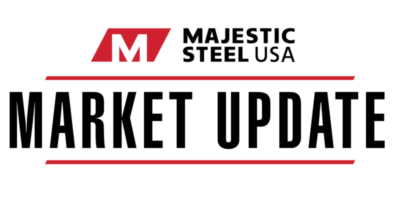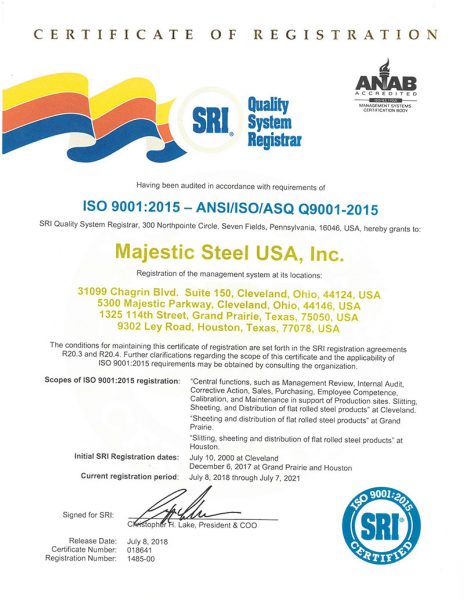Market Update | May 3, 2023
TOTAL CONSTRUCTION SPENDING INCREASED IN MARCH
Total spending increased to a $1.835 trillion rate, up 0.3% from February and up 3.8% from March 2022. While residential construction spending continued to slide, the continued recovery in non-residential spending pushed total spending higher. Non-residential spending now accounts for 54.3% of the total spending, the highest rate since October 2020.
Input Costs
Zinc pricing continued to push lower this week albeit only slightly from last week.
-
-
Zinc pricing came in at $1.18/lb this week, down from last week and is at its lowest level in over a year.
-
After the run up over the previous three months, spot iron ore pricing has remained steady over the past couple of weeks.
-
- Spot iron ore pricing is currently at $122.80 /mt, up from last week, virtually flat from last month, but up 7.0% over the last 90 days.
A wave of new supply, combined with a weaker demand environment has helped to push coking coal pricing lower as of late.
-
- Coking coal pricing currently sits at $229/mt, down 13.7% from last week and down 23.7% from a month ago.
- Coking coal pricing is now down 41.3% from the recent peak seen in mid-February.
Supply
U.S. raw steel production increased slightly last week, climbing for the fourth consecutive week.
-
- U.S. steelmakers produced 1.716 million tons at an 76.3% utilization rate: topping 76% for the first time since early October.
- The current YTD utilization rate is at 74.6%, down 4.4% compared to the same time last year.
Preliminary April import licenses, (24 days), showed total carbon steel imports are down 6.1% from the same time in March and down 10.1% from the same pace in April 2022.
-
- Coated import licenses are down as well from March and are at their lowest daily rate since December.
DEMAND
After sliding in the previous three months, total construction spending increased in March.
-
-
Total spending increased to a $1.835 trillion rate, up 0.3% from February and up 3.8% from the $1.768 trillion rate in March 2022.
-
While residential construction spending continued to slide, the continued recovery in non-residential spending pushed total spending higher.
- Non-residential construction spending came in at a $607.4 billion rate, up 1.0% from February.
- Residential spending came in at a $837.5 billion rate, down 0.2% from February.
- This was the tenth consecutive month in which residential spending declined.
- Non-residential spending now accounts for 54.3% of the total spending, the highest rate since October 2020.
-
Economic activity in the manufacturing sector continued to contract in April, sliding for the sixth consecutive month.
-
-
The ISM Manufacturing Index came in at 47.1, a slight improvement from the 46.3 reading in March.
-
Both the new order and production components contracted at a slower rate in April, with each improving over 1.0 points from March.
-
The new order and production components came in at 45.7 and 48.9, respectively.
- The backlog of orders component, a sign of pent-up demand, contracted at a faster rate however, sliding to 43.1 from 43.9, previously.
- Despite the overall declines, one of the five (of sixteen) manufacturing industries to report growth in April was Fabricated Metal Products.
-
Total light vehicle sales continued to push higher in April, climbing to their highest rate in nearly two years.
-
-
U.S. light vehicle sales came in at a 15.91-million-unit rate in April, up 7.2% from March and up 11.4% from the 14.28-million-unit rate in April 2022.
-
This was the highest monthly sales rate since May 2021.
-
Increased new vehicle availability is helping to boost sales and fill the pent-up demand, mostly from fleets, seen over the last few years.
- Strong job growth and increased wages are offsetting the negative impacts from higher interest rates, increase selling prices, and uncertainty around the economy.
- Year-to-date light vehicle sales are now up 8.2% compared to the same timeframe last year.
-
This material, information and analyses (the “Content”) may include certain statements, estimates and projections prepared with respect to, among other things, historical data and anticipated performance. Content may reflect various assumptions by Majestic Steel USA, Inc. concerning anticipated results that are inherently subject to significant economic, competitive and other uncertainties and contingencies and have been included for illustrative purposes. Content is provided AS-IS.

